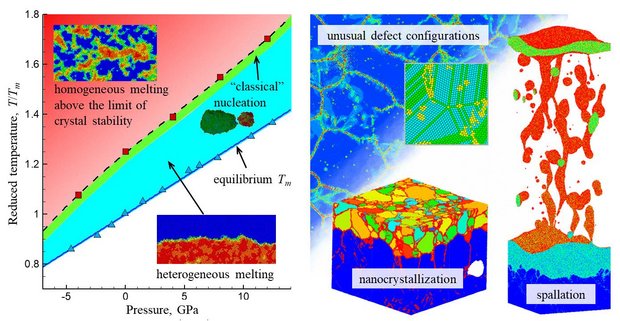Ole Rømer Colloquium - Leonid Zhigilei: "Laser-induced structural and phase transformations: Insights from large-scale atomistic simulations"
Oplysninger om arrangementet
Tidspunkt
Sted
Fys. Aud.
Ole Rømer Collquium
Speaker:
Leonid Zhigilei, University of Virginia
Host:
Peter Balling
Title:
Laser-induced structural and phase transformations: Insights from large-scale atomistic simulations
Abstract:
The ability of lasers to deposit large amounts of energy in small regions of irradiated targets makes it possible to perform selective material modification and, at the same time, provides unique opportunities for investigation of material behavior far from conditions of thermodynamic equilibrium. The ultrafast heating and cooling rates, steep temperature gradients, and strong thermoelastic stresses challenge the assumptions of conventional descriptions of the heat and mass transfer as well as the phase transformations based on the equilibrium phase diagrams. Atomistic and coarse grained molecular dynamics simulations of laser-materials interactions are playing an increasingly important role in investigation of complex and highly non-equilibrium processes involved in short pulse laser processing and surface modification. This role is defined by the ability of large-scale atomistic simulations to reveal the microscopic mechanisms of structural and phase transformations induced by the laser excitation and, at the same time, to provide clear visual representations, or “atomic movies,” of laser-induced dynamic processes. In this presentation, the results of atomistic simulations are used to provide insights into the mechanisms of homogeneous and heterogeneous meting under conditions of strong superheating/undercooling, generation of unusual crystal defects and nanoscale surface morphology, photomechanical spallation and “phase explosion.” The results of the simulations will be related to experimental observations, and the implications of the computational predictions for practical applications will be briefly discussed.

Coffee and cake will be available from 15.05
